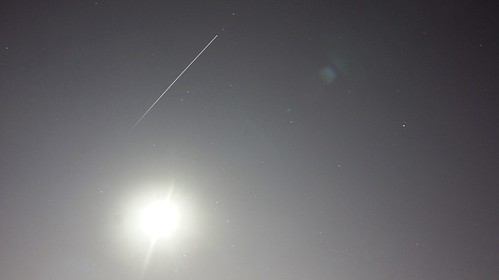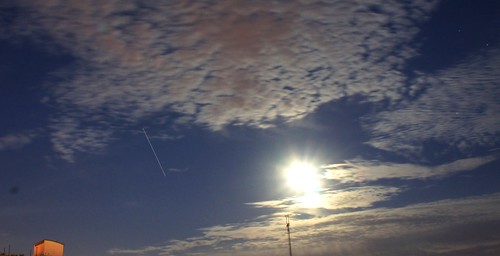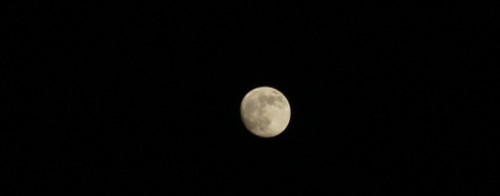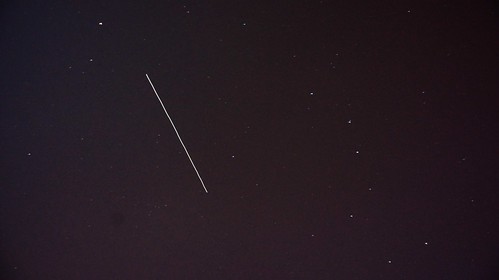The moon is at perigee, so it’s closer in its orbit and a bit bigger in the sky — a phenomenon popularly called “Supermoon.” Some nice ISS flyovers were lined up for the nights the moon was fullest, so I was able to set up the camera on the roof for a couple of 30 second exposures of the ISS streaking by the supermoon. First night was a closer pass, with the station fading to darkness as it entered Earth’s shadow:
Second night was cloudier, with the ISS passing farther from the moon, but I was able to expose the shot a bit better:
And if you want to see just the full moon or just the ISS (with Ursa Major to the side), I got those too:
These have been my best ISS long exposures thus far, but I need more practice with adjusting exposure for our specific night sky, especially as light pollution increases with local development. More of my previous ISS long-exposure attempts here.



